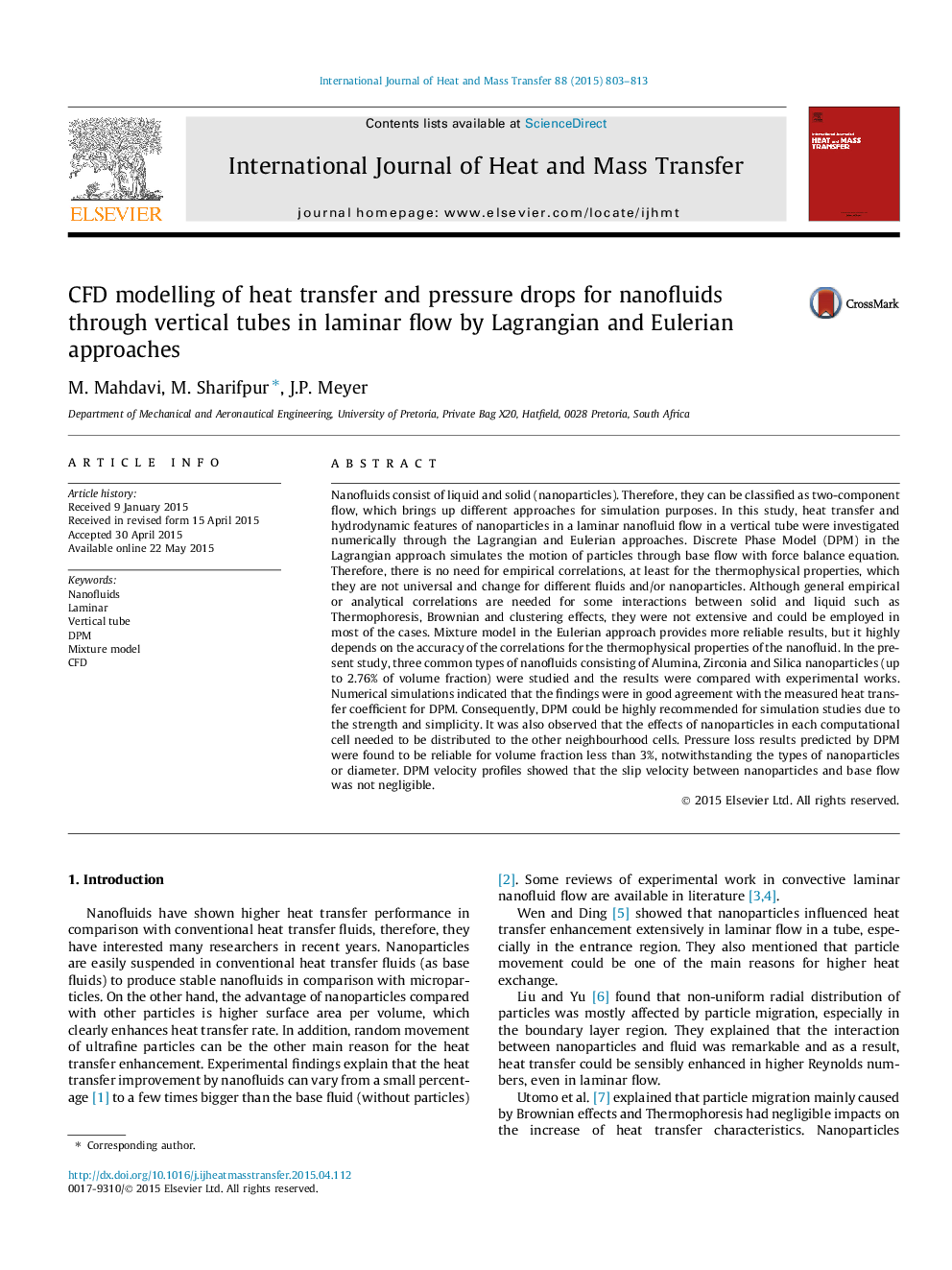| کد مقاله | کد نشریه | سال انتشار | مقاله انگلیسی | نسخه تمام متن |
|---|---|---|---|---|
| 657070 | 1458054 | 2015 | 11 صفحه PDF | دانلود رایگان |
عنوان انگلیسی مقاله ISI
CFD modelling of heat transfer and pressure drops for nanofluids through vertical tubes in laminar flow by Lagrangian and Eulerian approaches
دانلود مقاله + سفارش ترجمه
دانلود مقاله ISI انگلیسی
رایگان برای ایرانیان
کلمات کلیدی
موضوعات مرتبط
مهندسی و علوم پایه
مهندسی شیمی
جریان سیال و فرایندهای انتقال
پیش نمایش صفحه اول مقاله

چکیده انگلیسی
Nanofluids consist of liquid and solid (nanoparticles). Therefore, they can be classified as two-component flow, which brings up different approaches for simulation purposes. In this study, heat transfer and hydrodynamic features of nanoparticles in a laminar nanofluid flow in a vertical tube were investigated numerically through the Lagrangian and Eulerian approaches. Discrete Phase Model (DPM) in the Lagrangian approach simulates the motion of particles through base flow with force balance equation. Therefore, there is no need for empirical correlations, at least for the thermophysical properties, which they are not universal and change for different fluids and/or nanoparticles. Although general empirical or analytical correlations are needed for some interactions between solid and liquid such as Thermophoresis, Brownian and clustering effects, they were not extensive and could be employed in most of the cases. Mixture model in the Eulerian approach provides more reliable results, but it highly depends on the accuracy of the correlations for the thermophysical properties of the nanofluid. In the present study, three common types of nanofluids consisting of Alumina, Zirconia and Silica nanoparticles (up to 2.76% of volume fraction) were studied and the results were compared with experimental works. Numerical simulations indicated that the findings were in good agreement with the measured heat transfer coefficient for DPM. Consequently, DPM could be highly recommended for simulation studies due to the strength and simplicity. It was also observed that the effects of nanoparticles in each computational cell needed to be distributed to the other neighbourhood cells. Pressure loss results predicted by DPM were found to be reliable for volume fraction less than 3%, notwithstanding the types of nanoparticles or diameter. DPM velocity profiles showed that the slip velocity between nanoparticles and base flow was not negligible.
ناشر
Database: Elsevier - ScienceDirect (ساینس دایرکت)
Journal: International Journal of Heat and Mass Transfer - Volume 88, September 2015, Pages 803-813
Journal: International Journal of Heat and Mass Transfer - Volume 88, September 2015, Pages 803-813
نویسندگان
M. Mahdavi, M. Sharifpur, J.P. Meyer,